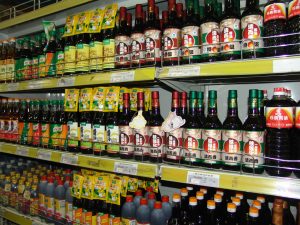The retail sector is where consumers come face to face with food. Retailers have significant influence over whether the food that consumers face is nutritious, safe, available, affordable or attractive. I have heard it said many times that the chief buyers for large food retailers are more important in influencing food choices than Ministries of Agriculture or Food. This statement may well be true because the choices buyers take about which companies, supply chains and regions to buy from can make or break those entities. But whether large of small, the retailer is the ground zero for the consumer. It is where the array of foodstuffs available for purchase reveals itself. The retail space defines the parameters of consumer choice.
The parameters matter, because the availability, affordability and attractiveness of nutritious safe foods is vital to the health of consumers. In every country or region of the world, diet related factors (overweight, high blood sugar, high cholesterol, high salt, diets low in fruits, vegetables and nuts) are in the top 10 risks for the burden of disease. While it is often said that you are what you eat, it is certainly true that our collective disease burden is defined by what we eat.

Despite this profound ability to shape the last mile of the food system, food retailers are not very present in global or national business platforms that focus on nutrition. There are only 3 retailers in the FReSH initiative of the World Business Council on Sustainable Development (WBCSD) and of the EAT Forum. There are no retailers among the global members of the SUN (Scaling Up Nutrition) Business Network and there are very few retailers in the 16 national SUN business networks. The Global Alliance for Improved Nutrition (GAIN) works with far fewer food retailers compared to food producers, processors, distributors and marketers.
Why is this? There is a perception perhaps that the margins are so low in retailing that key decision makers are risk averse and not willing to change. But this does not seem to be the case with the supermarket trials of “plastic free aisles”. Perhaps the demand for nutritious food has not yet caught up with the demand for reusable plastic in packaging. There may also be a failure to incentivise retailers to do things differently. For example, while we can assume retailers have maximised profits when it comes to consumer choice architecture (where items are placed in the geography of a store), what would it take to convince them to set up junk food free aisles, or to place healthier products at eye level or to develop “buy 1 get 1 free” for foods that are above a good nutrition threshold? I’m not sure we know.

The word “retail” was first recorded as a noun in the 1400s with the meaning of “sale in small quantities”. Now is the time to redefine the word “retail” as “sale in nutritious quantities”. That is a challenge to retailers, but it is also a challenge to the rest of us who want, like my organization GAIN, to improve the consumption of nutritious food for all. We need the ultimate “two for one” offer: when public and private sectors come together to make it easier for everyone to acquire a nutritious diet.
I look forward to engaging retailers in improving the consumption of nutritious food for all at the 2019 Sustainable Retail Summit hosted by The Consumer Goods Forum this year. This Summit will be an opportunity to have a constructive dialogue with retailers and increase their engagement for nutrition ahead of the 2020 Global Nutrition Summit.
This blog was written and contributed by:
Lawrence Haddad
Executive Director
Global Alliance for Improved Nutrition

